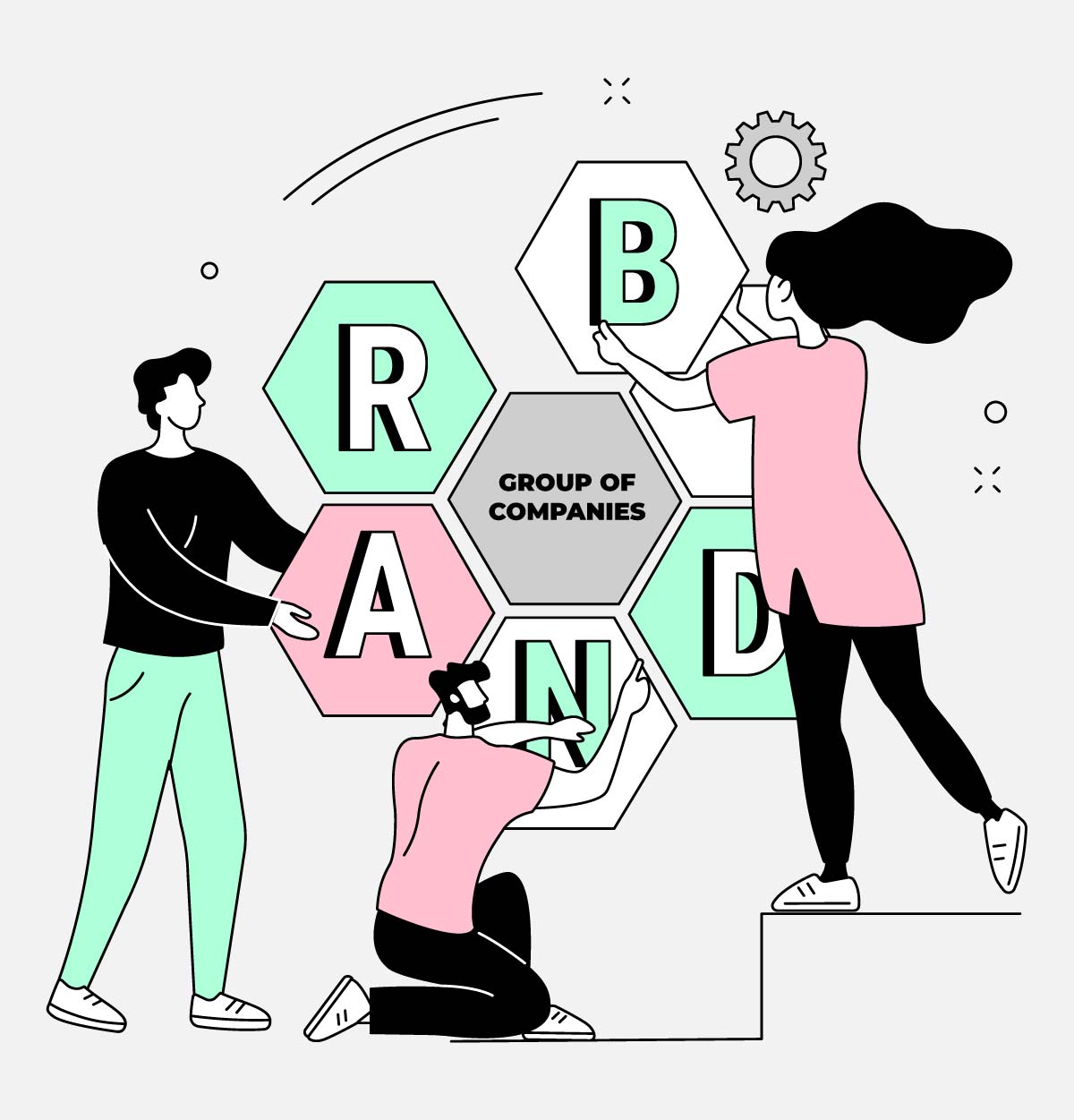
Branding a Group of Companies: Building Unity Without Losing Identity
Looking to create a powerful, unified brand presence across multiple companies while respecting each entity's individuality? Branding for a group of companies requires a thoughtful, strategic approach - one that balances cohesion with flexibility.

What Does Branding a Group of Companies Mean?
A "group of companies" could mean a holding company with multiple subsidiaries, a conglomerate spanning industries, or a parent brand with a portfolio of products and services. Unlike branding a single business, you're working with multiple identities, audiences, and sometimes even conflicting goals.
Without a clear branding strategy, the result can be confusion, diluted messaging, or missed opportunities for synergy. But with the right approach, you can build a system that strengthens every part of your business ecosystem.
Key Branding Strategies for Groups
When branding a group of companies, three primary approaches are commonly used:
- Branded House (Monolithic Brand)
Everything operates under one master brand name and identity. Think Google or Virgin - their products and services share the same visual identity and brand personality. - House of Brands (Freestanding Brand)
Each company or product has its own distinct brand, independent from the parent. Examples include Unilever or Procter & Gamble, where Dove, Lux, and Surf Excel have their own look, tone, and positioning. - Endorsed Brand (Hybrid Approach)
A middle path where individual brands have their own identity but are visibly connected to the parent brand for credibility. Think Marriott Hotels or Kellogg's Corn Flakes - each sub-brand carries an endorsement that links back to the parent.
Each approach has its strengths and trade-offs. The right choice depends on your goals, audiences, and how interconnected your companies are.
How to Choose the Right Approach
Before jumping into logos and taglines, it's critical to ask:
- Do your companies serve similar or very different audiences?
- Do you want customers to recognize the parent company, or should each brand stand alone?
- How much operational or cultural overlap exists between companies?
- Are you entering new markets that require localized identities?
A thoughtful analysis of these factors helps determine whether unifying under one brand, maintaining separate identities, or finding a balance works best.
Designing a Cohesive Yet Flexible Visual Identity
Once the strategy is set, design brings it to life. Branding for a group needs more than just a logo - it needs a visual system. This system might include:
- A shared color palette or typography across brands
- Subtle visual cues tying subsidiaries back to the parent brand
- Flexible logo lockups for different contexts
- Clear guidelines to avoid brand clashes or inconsistencies
The goal? Allowing each company room to express its unique value while reinforcing the larger brand story.
Common Challenges - and How to Avoid Them
Branding a group of companies isn't without pitfalls. Watch out for:
- Brand cannibalization: overlapping offerings causing confusion or competition between brands
- Internal resistance: companies reluctant to adopt a shared identity
- Overcomplication: too many rules or visuals diluting clarity
A well-crafted brand architecture plan, clear communication, and inclusive design processes can help avoid these traps.
StudioD's Perspective: Crafting Brand Architecture with Purpose
At StudioD, we understand that many business groups evolve organically, often without a cohesive branding strategy. Over time, this can lead to a fragmented brand presence that hinders recognition and growth.
We advocate for a strategic rebranding approach that unifies your group's identity while respecting the uniqueness of each entity. This process not only enhances brand clarity but also rejuvenates your business, making it more competitive in today's market.
A Lesson from the Tata Group
When Ratan Tata became chairman of the Tata Group in 1991, he observed that the conglomerate's various companies operated with disparate brand identities. Recognizing the need for a unified brand presence, he initiated a comprehensive rebranding strategy.
By 1998, a new Tata Group logo was introduced, designed by the British consultancy Wolff Olins. This iconic "T" within an oval became the common emblem across all Tata companies, reinforcing a cohesive brand image and strengthening the group's identity in the global market.
This strategic move not only streamlined the brand architecture but also enhanced the group's credibility and recognition worldwide.
Build a Stronger Brand Ecosystem
Branding a group of companies is both an art and a strategy. Get it right, and you create a brand ecosystem where every part supports the whole.




